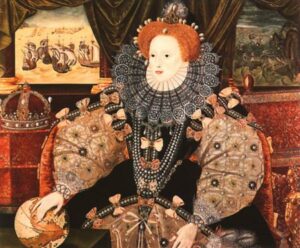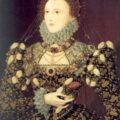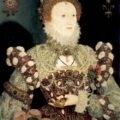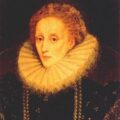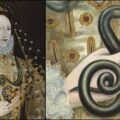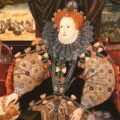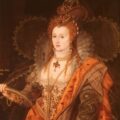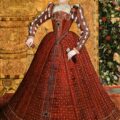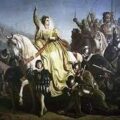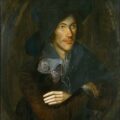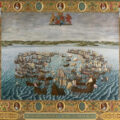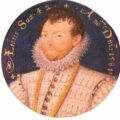Following on from last week’s article “Elizabeth I – Queen of PR”, I thought it would be good to start our examination of Elizabeth I portraits with the famous Armada portrait. This portrait is by an unknown artist (possibly George Gower) and was painted circa 1588, the same year as Elizabeth I’s defeat of the Spanish Armada.
The Armada Portrait is rich in symbolism, as are many of Elizabeth’s portraits, so I’ll start the ball rolling with symbols I can see and have found during my research, but please do add your own thoughts in the comments section below.
Symbolism in the Armada Portrait
- Pearls – Like her mother before her, Elizabeth loved pearls and in her portraits pearls symbolise purity and virginity. Pearls symbolised purity. Marilee Cody, on her excellent site on Tudor portraits – http://www.marileecody.com/eliz1-images.html – suggests that the pearls were Dudley’s last gift to Elizabeth and so had special meaning to Elizabeth.
- Elizabeth – Although Elizabeth was around 55 when this portrait was painted, she is presented as youthful and vibrant with her made-up face, bright red hair and unblemished complexion. She is also dressed in all her finery and rich jewels, and really is the iconic, ever-youthful Virgin Queen.
- Elizabeth’s gaze – C J Cairns writes of how the way that she is gazing into the distance could symbolise her looking to the future of her realm.
- Posture – Just as her father liked his posture to speak of his power and magnificence, Elizabeth too has adopted a posture of power.
- Ruff – C J Cairns writes of how her ruff frames her face like rays of the sun.
- Window scenes – I think it was David Dimbleby in his series “The Seven Ages of Britain” who noted that in the window on the left hand side of the painting there is the arrival of the Armada and then on the right there is the defeat of the Armada. This portrait could be seen as a tribute to Elizabeth’s success at protecting the nation from Spanish invasion or you could see a religious meaning: perhaps the ships are being forced onto the rocks by the “Protestant wind”. C J Cairns comments that Elizabeth has “called upon the elements to dispel the Spanish Catholic threat”.
- Globe – If you look at the placement of Elizabeth’s hand on the globe, you can see that her hand is over the Americas which England was busy colonising. As Marilee Cody points out, this painting was painted one year after the birth of the first English child in the colonist’s settlement of Virginia. Her fingers are extending to other parts of the globe and this symbolises that Elizabeth’s power is fa reaching and that the whole world is at her disposal.
- Pillars – An article on wikipedia says that “The Queen is flanked by two columns behind, probably a reference to the famous impresa of the Holy Roman Emperor, Charles V, Philip II of Spain’s father, which represented the pillars of Hercules, gateway to the Atlantic Ocean and the New World.”
- The egg shaped object – Of you look at the right hand side of the painting, you can see that there is an egg shaped object above Elizabeth’s shoulder and in front of the window. It appears to be a pomegranate which symbolised fertility, abundance, generosity, union, prosperity, rebirth, resurrection and eternal life.
- The Crown – Confirmation of Elizabeth’s powerful position as monarchy and her royalty and majesty. If it is indeed an imperial crown, as some have suggested, it speaks again of Elizabeth’s far reach and Elizabeth as Empress.
- Carving – The arm of the chair has a carving of a mermaid which, according to C J Cairns was “a symbol of the potential destructive nature of females” and that Elizabeth’s position with her back to the image could signify her rejection of its meaning. I wonder if it actually speaks of Elizabeth’s power over the seas.
- Bow – One article on this portrait has suggested that the placement of the large bow is a “blatant display of Elizabeth’s virginity” just as Henry VIII’s large codpiece spoke of his sexuality and prowess.
Notes and Sources
- Elizabeth I: The Armada Portrait by C J Cairns
- Portraits of Queen ELizabeth I, by Marilee Cody
- Portraiture of Elizabeth I of England
